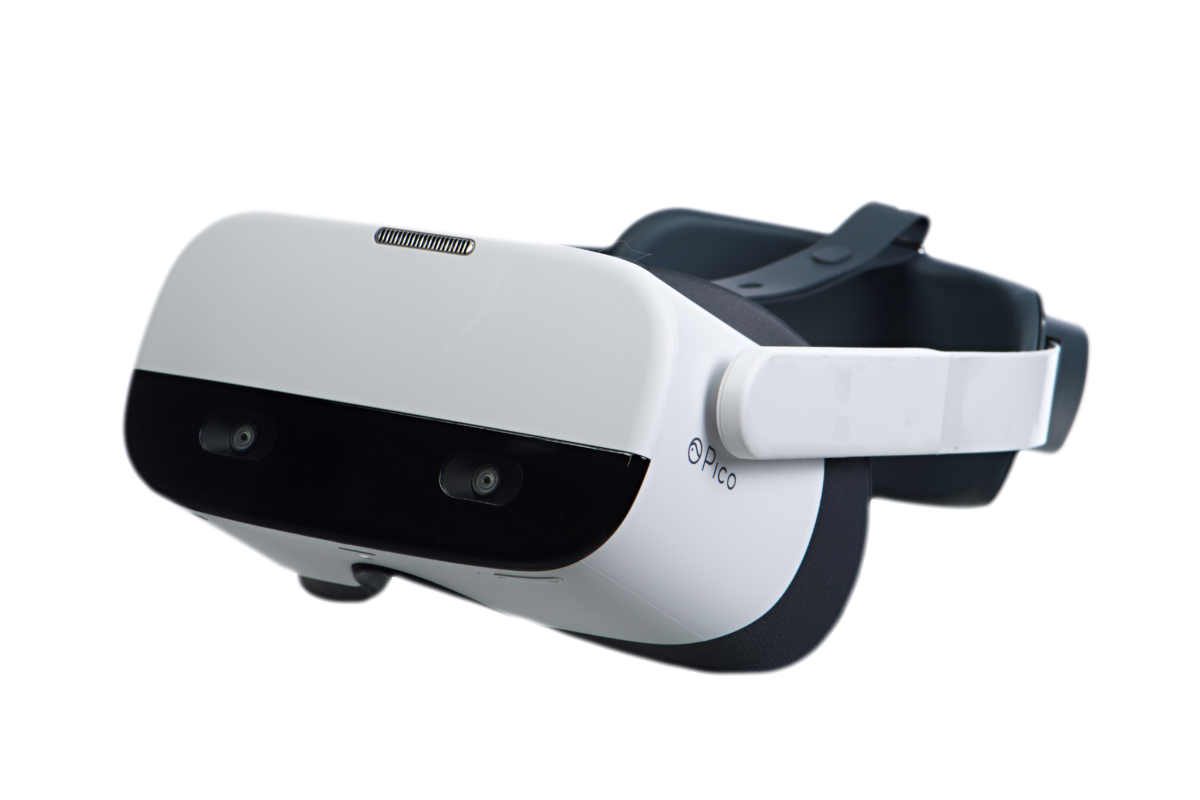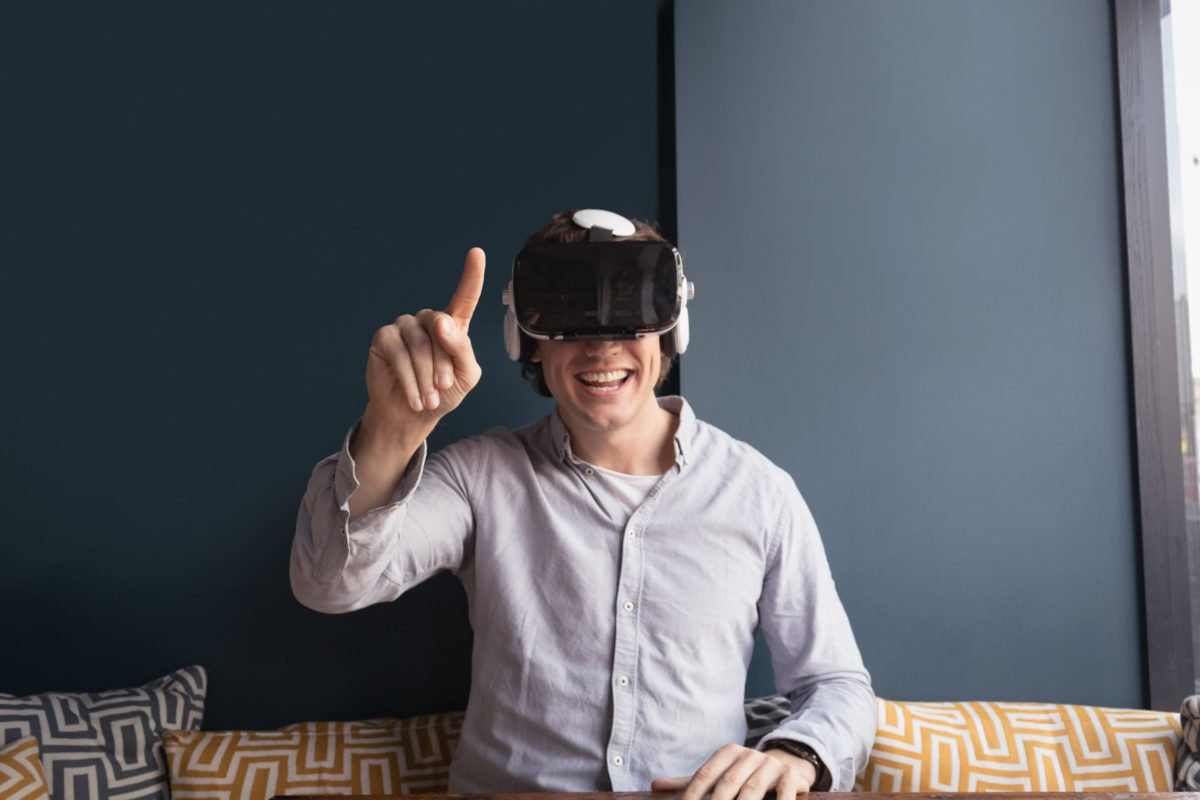Immersive learning in its rawest, most basic form isn’t much different than the old-fashioned method of tossing someone into a pool to teach them how to swim, (that example, of course, would be immersive learning quite literally). Today’s immersive learning works similarly, using various forms of technology to put students and trainees in the center of their educational experience (usually a dry experience, it should be noted). Often, modern immersive learning will leverage a highly realistic simulated landscape to replicate work environments in which trainees will have to work once on the job. In immersive environments, students can work within, and frequently manipulate, their surroundings in order to better learn and practice skills.
Virtual reality is a natural next step for immersive learning methods, with its innate ability to create and maintain such landscapes. With VR tech, a learner can instantly be transported just about anywhere, with any tools, developing their problem-solving abilities while gaining in-depth, hands-on knowledge in a risk-free virtual environment.
Learners who thrive in immersive learning’s desktop computer-based environments are likely to do just as well with virtual reality’s more complex simulations. In both cases, learning happens through doing. Students can track their progress by watching their own improvement within the environment, often in real-time, and can make their gains even more concrete by completing knowledge-based assessments outside the environment in the real world.
The value of VR learning lies in…failure?
Somewhat ironically, immersive and simulation-based learning achieves their biggest educational successes in the way they allow learners to fail. The costs of failure in VR, while they can be emotionally impactful, are obviously negligible when compared to failures made in the physical and unforgiving real world. In VR, failure is simply an invitation to get better.
VR is already being used heavily to create simulations for construction-based worker safety. Simulating dangerous circumstances allows workers to make mistakes and experience consequences — before returning to the real world, wiser for the experience and having escaped real injury or other negative impacts.
VR is an ideal way to teach high-stakes skills. A cardiac surgeon or airline pilot will have real lives in their hands one day. Simulation training allows them to hone skills and be ready for the real thing. When the real-life situation occurs, the student already has a sense of having completed the procedure previously and comes to the task with increased confidence and calmness.
Immersive learning and virtual reality allow learners the time and space to apply logical thinking, along with the freedom to fail while learning from the experience and being able to try again. In addition to teaching the correct reactions in any given crisis scenario, VR also has applications for the less octane-fueled lives many civilians lead.
VR and immersive tech are now reaching outside the military, aviation, and healthcare fields to immersively train people in corporate surroundings. Executives and departmental heads can work on employee management tactics. Differently-abled students can utilize VR in building soft and social skills that will aid them in their careers.
Using virtual reality setups as the preferred immersive technology format is becoming more accessible each year. Costs for VR headsets are dropping, and untethered versions allow almost any space to become a learning environment.
Utilization of VR by industry leaders
Attitudes towards VR in high performing companies are positive. A 2017 Compliance Study noted that 9% of high-performing companies were already deploying virtual reality (compared to 6% of other organizations); 15% percent of high performers said their company use of virtual reality would increase over the coming years.
High-consequence industries, in particular, see the value of VR and immersive learning. In the same study, 45% of leaders said they considered immersive simulations as either important or critical to achieving their business goals through 2018.
However, only 18% of companies in high-consequence industries were ready to execute. While 29% of leaders running companies in high-consequence industries said they were not at all prepared, 30% said they were somewhat prepared.
Part of this can be attributed to the cost of VR just a scant 24-36 months ago. Part of it can be assigned to the constraints of tethered VR, which is also now becoming less of an issue as fully tetherless, standalone VR hardware models increase in circulation.
Benefits of immersive learning delivered by VR
Some of the most pronounced benefits of VR-based learning include:
Visualization, providing a better learning experience
Presenting information visually can speed learning time and improve comprehension. In one study, an educational text document used to teach resulted in scores of just 87%, while the same information delivered via VR resulted in a 94.5% score. A total 100% of users said they felt comfortable using the tech and applying the knowledge learned, while 90% said they would feel valued if an employer invested in VR tech for training purposes.
360° views, leading to increased interest and engagement
VR provides 360° interactivity, creating an experience far richer than that delivered by textual or flat-screen experiences. Using VR technology in the classroom, boardroom, or in the field can increase learners’ interest in the training, encourage productive engagement, and can motivate the user to invest in and benefit from the training being offered.
Lower risk in case of failure, leading to increased self-confidence
With VR providing an immersive experience, high-risk situations can be repeatedly experienced for both user desensitization, (reducing fear), as well as providing them with hands-on experience otherwise hard to come by. Medical students being taught to perform rare surgeries may find themselves at a loss for preparation techniques due to a lack of real-world patients. VR, however, allows them to repeatedly hone their skills in a virtual operating room — time after time, with no risk — making them better equipped to face the task in real life.
The same holds for the corporate world. Where better to learn the high-stakes game of negotiating from a position of power but in a simulation? Likewise, industrial workers can practice safety drills without having to close down a factory floor or take valuable equipment offline. Most importantly, they can use their virtual mistakes as learning experiences, instead of spending time recuperating from serious injuries such as resulting amputations or dangerous fume inhalation. Learners can practice and test their knowledge without physical consequences while acclimating to the emotional and mental stresses of their job.
Lower cost, leading to faster implementation and the ability to scale
While the individual price of VR equipment may still be considerable, the cost of VR training is not. In the real world, developing on-the-ground programs for large batches of trainees requiring the deployment of equipment and personnel can cost thousands per simulation, and must be repeated for each new group.
VR, on the other hand, can save more than $2,000 per program when used to develop and simulate training intended for massive audience deployment. The reduced costs tied to the lack of individual travel to a dedicated training facility alone can result in significant savings.
VR and immersive learning in action
According to Accenture’s “Immersive Learning for the Future Workforce” report, research from Stanford University and Technical University Denmark found learners recall more when using virtual teaching methods than with traditional methods, resulting in a 76% increase in learning effectiveness. The Virtual Reality (VR) training market for enterprise is expected to grow to USD $6.3 billion by 2022.
In an internal experiment conducted by Accenture, two groups were asked to complete the somewhat unglamorous (but critically important!) task of replacing a toilet. One group watched an instructional video on how to perform the task, while the other participated in interactive VR training. The second group performed with 12% higher accuracy and completed their tasks 17% faster than the first group. A post-exercise survey indicated that the latter group also had an improved perception of usefulness regarding how their training helped them accomplish the dirty job.
The efficacy of virtual reality systems as a means of delivering immersive learning experiences cannot be overstated. Users can acquire a complete understanding of the lesson and develop more finely honed skills through the process of failure — leading to eventual and repeated success. VR not only creates the optimal immersive learning experience but also leverages it to its fullest potential.

PIXO Has Improved VR Management to One Easy Step

